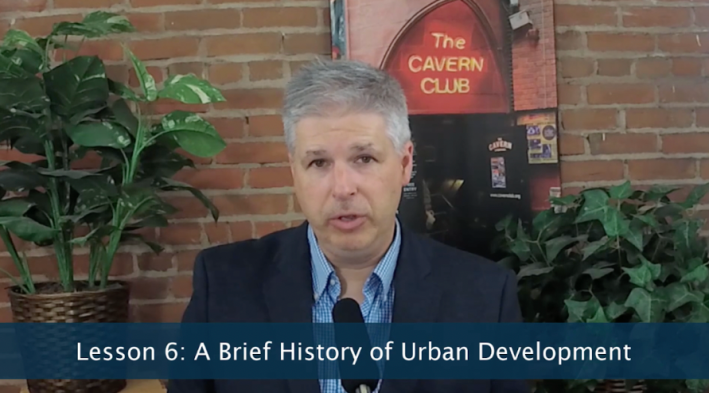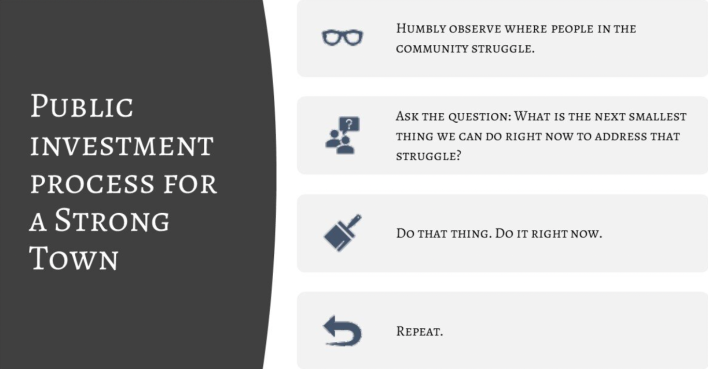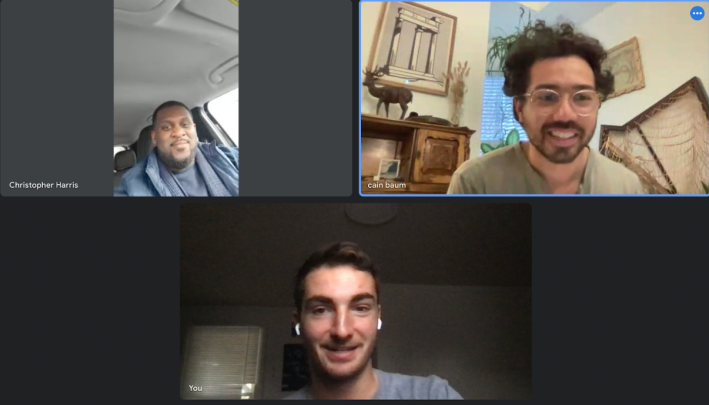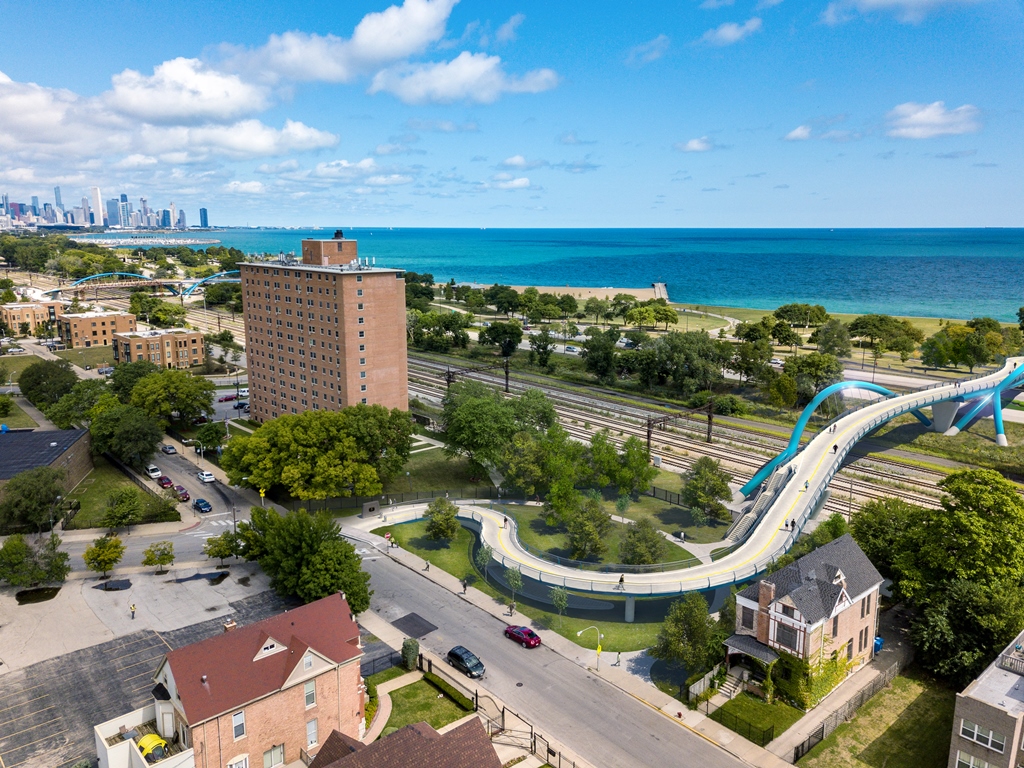A quick chime, then another, and another as more members sign into the Zoom call. It’s another week, and another meeting of the local Chicago chapter of Strong Towns. Through weekly meetings, Strong Towns Chicago seeks to bring the Strong Towns ethos to Chicago.
Founded in 2008 by former transportation engineer Chuck Marohn, the Strong Towns organization is committed to a bottom-up revolution to make American cities more walkable, livable, and financially resilient. By demonstrating the financial cost, safety issues, and environmental pollution of car-centric development, through tax value per acre analysis, crash map data, and critiques of sprawling development patterns, Strong Towns has worked to increase awareness and fix the problems of Automobile-focused street design. With over a million members, Strong Towns accomplishes this goal by providing online resources, educational courses, and events to help local communities make the change they want to see around them.

As one of the many local chapters, Strong Towns Chicago brings together 30-plus members from all over the city every Wednesday over Zoom to discuss how Chicago can become more walkable and bikeable through small-scale changes. This community of students, computer scientists, construction managers, urban planners, and many others has bonded during the weekly meetings over a shared passion for improving our city. At these meetings, not only is community formed, but members learn more about what makes a more walkable, financially resilient place and projects are worked on to make these places a reality in Chicago.
For the educational component, meetings start by watching and discussing free online Strong Towns Academy courses. From understanding why cities like Chicago face the problem of underfunded pensions to how to engage effectively in local government, these lessons help explain the issues Chicagoans experience on a daily basis and teach viewers how to create change.
For example, this week group members watched Marohn speak on the history of urban development, and the difference between growth versus productivity. They learned the importance of having a high tax value per acre development in order to fund municipal expenses, and how dense urban cores subsidize suburban sprawl. Members noted how this economic justification can persuade people to support pedestrian-friendly development who might not be convinced by the environmental or social benefits of walkable places. Additionally, the lessons sparked discussion of how Chicagoans can create value in their own neighborhoods. This led to the second part of the Strong Towns Chicago meeting: working on projects.
Currently, Strong Towns Chicago works on short-term (1-2 weeks) and long-term (1-2 months) projects. To determine a good project, members apply the Strong Towns four-step process for public investment. By focusing on quick change the process allows the group to "fail quickly" and see what projects create the most benefit to the community.

For example, one short term project the group plans to work on in the near future involves shoveling and salting the sidewalk near a CTA station by a member's home. By comparing the number of people who walk on the sidewalk before and after it is cleared, Strong Towns Chicago hopes to demonstrate the economic and environmental benefits of plowing the sidewalks in Chicago and support the #PlowTheSidewalks movement started by Better Streets Chicago.
As for long term projects, members are currently working to paint a mural along 43rd Street and Lake Park Avenue in Kenwood-Oakland, near where one of the members lives, to complement the new pedestrian bridge connecting 43rd street and the Lakefront Trail. Through engaging neighborhood groups such as Bright Star Church, the MOJO Museum, and the Oakland Museum, Strong Towns Chicago plans on encouraging bike riders and pedestrians to not just use the new bridge to access the lakefront trail, but also explore key organizations and spaces in the community. By meeting with neighborhood organizations and getting their input early on in the process as well as communicating with the alderperson’s office, Strong Towns Chicago creates bottom-up change starting with the people who will be impacted the most.
Through the educational lessons and projects Strong Towns Chicago provides its members with an opportunity to help the community, build a network with organizations across the city.

In addition to the work being done in our city, Strong Towns Chicago supports the larger Strong Towns organization's key initiatives. For example, Strong Towns has created a crash analysis studio to highlight how road design contributes to car crashes. The studio sources traumatic accidents from across the nation and brings together a panel of technical and non-technical experts to discuss the multiple factors that caused the crashes. This generates awareness of the safety issues associated with car-centric design, such as wide lanes and large clear zones, as well as developing a resource that everyday citizens, transportation engineers, and politicians can use to create a safer street. Currently, the studio is taking nominations for crashes to analyze and Strong Towns Chicago has supported this initiative by suggesting collisions that have occurred in our neighborhoods. If you know of a crash that appears to be the result of unsafe street design, you can nominate it here.
Through community, education, and activism Strong Towns Chicago strives to create an environment where everyone from professional urban planners to everyday citizens can come together to learn about creating positive change in our city. If you are interested in attending a meeting or learning more about Strong Towns Chicago check out the Instagram account, join the email list, or join the next Zoom meeting over zoom on November 30 at 6 p.m. Sign up on the email list to receive the meeting link.




